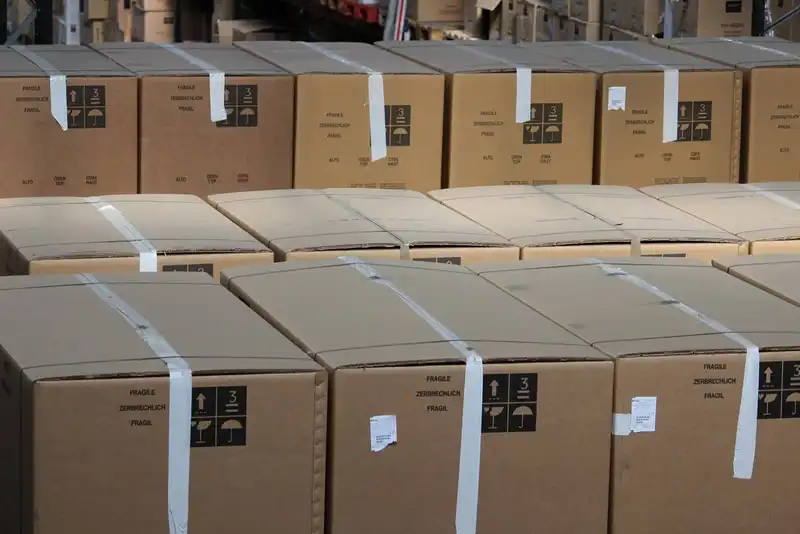Real-Time Inventory Management- Benefits and How to Get Started
Many modern businesses have expanded to outlets outside of traditional sales channels, such as online marketplaces. This calls for an extensive management system that can report transactions from each location.
Companies must also incorporate data from incoming inventory shipments to view accurate stock levels. With real-time inventory software, businesses can actively watch sales to optimize ordering strategies.
What is Real-Time Inventory?

Real-time inventory refers to the amount of stock a business has at any given time. This quantity can change at any passing moment, as it considers current transactions and inventory purchases.
This type of inventory needs heavy management because of its constantly changing state. Real-time inventory management is the continual process of reporting stock transactions immediately through automation tools, such as software.
Access to current inventory metrics gives businesses better visibility into their supply chain and procurement needs. This high level of functionality enables companies to improve their responsiveness to fluctuating customer demand and market trends.
Inventory management systems record every invoice, receipt, sale, and purchase order across all sales channels to consolidate stock information, providing the most accurate counts. This requires robust software that can integrate data from multiple systems into one centralized interface.
Benefits of Real-Time Inventory

Although many businesses still use traditional inventory management methods, real-time inventory enables companies to-
Prevent Stockouts
One of the biggest concerns that companies have is experiencing stockouts, as they can negatively impact customer satisfaction, retention, and advocacy. Just one stockout can lead to a significant decrease in profits from lost sales.
Stockouts can occur from an unexpected spike in customer demand or poor inventory control. However, with real-time inventory, businesses can anticipate shortages and prepare stock levels to maintain sales.
On the other hand, companies that still use a periodic system only discover low quantities at the end of the accounting cycle.
Access Current Inventory Counts
Real-time inventory systems increase stock visibility, allowing employees to monitor levels regardless of where they are within the company.
Workers can even locate items within the supply chain to determine which locations need to transfer products. This is especially helpful for large corporations that have multiple warehouses, distribution centers, and retail stores.
Multi-channel businesses that utilize several retail platforms also need access to real-time inventory, as manual consolidation methods are time-consuming.
Quickly Locate Goods

Besides seeing which sites products reside in, some inventory software allows businesses to map out their storage units, making it easier to retrieve items.
By optimizing warehouse layouts, companies can minimize travel time during product picking and order fulfillment to reduce wait times. This also decreases the risk of losing units.
Generate Accurate Financial Plans
With access to real-time inventory metrics, organizations can enforce data-driven decision-making.
Automated inventory software can integrate with point-of-sale (POS) systems to continuously update the cost of goods sold (COGS) so owners can determine their profitability. Businesses can generate the most accurate financial reports to optimize budgeting, expense files, and asset tracking.
Avoid Inventory Fluctuation
While stockouts are detrimental to business, overstocking products can also significantly limit the bottom line.
With real-time inventory systems, companies can view stock levels across their entire network to determine if they need to submit purchase orders. If one location is selling out of products that another facility has, managers can simply transfer products. This saves shipping, procurement, and labor costs.
Overstocking products can inflate storage costs and even turn into slow-moving inventory, which takes up space for high-profit items. If the products become obsolete, the business may be forced to promote discounts or even dispose of them.
Meet Customer Demand

It is hard to track customer demand with periodic inventory systems as there is only one data entry at the end of the period to report the ending inventory. With real-time inventory, the software can evaluate historical and incoming sales data to detect demand patterns.
This machine-learning enables managers to decrease orders for slow-moving stock and increase orders for high-demand products to limit expenses and promote sales.
What Businesses Need for Real-Time Inventory
Businesses looking into implementing a real-time inventory system need two primary elements-
Software

Manual inventory tracking does not suffice for real-time inventory. Companies need robust software that can integrate POS and procurement data to keep stock quantities up to date.
Starting with inventory management software, organizations need a solution with integration capabilities that can not only collect data with other systems but also other platforms.
This means that aside from POS, ordering, and warehouse systems, it should also connect with the traditional, e-commerce, and online marketplaces. Otherwise, various sales channels may not have access to the current stock levels, which could result in stockouts and backorders.
With cloud-based software, companies can connect to all systems without having to work off of one server. This also enables businesses to communicate with external partners through a universal interface.
Hardware

With modern software, employees can use automation tools to streamline daily inventory procedures, minimizing the risk of human error.
For example, by establishing product barcodes and scanners, workers can simply scan items for transactions, incoming shipments, order fulfillment, and cycle counts. This data is automatically uploaded into the software, eliminating the need for manual entries.
Therefore, businesses do not have to worry about miscounts and miscalculations affecting their inventory accuracy.






